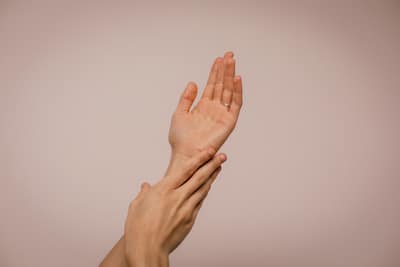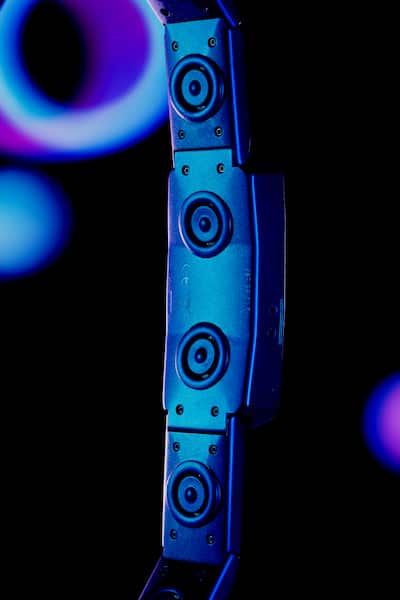
For people with a hearing reduction, there are assistive devices like hearing aids. People who are profoundly deaf or severely hard-of-hearing can sometimes use a cochlear implant, an implant to treat hearing loss. The condition for this is a functioning central hearing pathway. People who cannot or do not want to use a cochlear implant perceive sounds primarily in one way – by feeling it. In this article, we take a look at how tones and sounds are perceived by the Deaf Community and how we can contribute with our technology to make them even more intense.
Contents
In Germany, there are about 80,000 Deaf people and about 16 million people with any degree of hearing loss. “Deaf” usually refers to a hearing loss with very little or no functional hearing. “Hard of hearing” is a hearing loss where there is residual hearing. Persons from the Deaf Community or persons who are quite hard of hearing communicate mainly in sign language (University of Washington). The German and many other sign languages are full-fledged linguistic systems. This languages have a natural origin, are visual-manual and have an independent grammar (Unesco).
People who use sign language can express everything with it – even abstract facts.
The term “Deaf” refers to the cultural identity of people with hearing loss, who also define themselves through this common language. 23 of September is International Sign Language Day. On this day, attention is drawn to deafness and sign language.
Please notice: The term “hearing impaired” is often used for people with any degree of hearing loss. There are people who are deaf or hard of hearing that prefer the terms “deaf” and “hard of hearing.” For them they are more positive, because they don’t imply a deficit (University of Washington).

People who belong to the Deaf Community may have more strongly developed senses than hearing people. For example, they often experience haptic and visual sensations more strongly. A lot of scientific research is being done in this area.
The scientist Dr. Dean Shibata noted that Deaf people sense vibration in the part of the brain that other people use for hearing. In this way for example Deaf musicians can sense music and Deaf people can enjoy concerts and other musical events (Science Daily).
“These findings suggest that the experience Deaf people have when ‘feeling’ music is similar to the experience other people have when hearing music. The perception of the musical vibrations by the Deaf is likely every bit as real as the equivalent sounds, since they are ultimately processed in the same part of the brain.”
Dr. Dean Shibata, assistant professor of radiology at the University of Washington. (Science Daily)

When listening to loud music, people in the Deaf Community can feel intense bass by “sensing” music with their feet and belly. For example, a parent may turn up the music loud in the car so that the child, who is hard of hearing, can also perceive the music.
The “Lebenshilfe Disco” is an initiative in german countries that organises special events for people with handicaps. Here, people celebrate together, exchange stories and dance. Different sounds are played here, but mainly those that are bass-heavy.
You can find the relevant events via search engines by entering “Lebenshilfe Disco” and the respective city.
Some clubs also run “Deaf parties” for hearing and Deaf people, such as the Glashaus at the Treptower Arena in Berlin. The organisers advertise that visitors can experience music with all their senses. The bass can be strongly felt, sometimes the organisers even integrate fragrances into the events. Often there are also additional attractions such as acrobats or vibrating dance floors (Taz).

At exhibitions and events, we have already come into contact with people who belong to the Deaf Community. We quickly realised that many people were interested in the Feelbelt.
Through the Feelbelt’s impulse generators, users feel frequencies of 10-20,000 Hz – that is, both deep basses and high-pitched sounds. The 10 pulse generators convert every sound into vibration that can be felt on the body; more precisely in the abdominal region, as this is one of the most sensitive parts of the body. Fine differences in the transmitted frequencies can be perfectly felt there.
For hearing people, the Feelbelt is a kind of add-on for games, music and VR to create more immersive experiences. People from the Deaf Community have the opportunity to feel sounds on their bodies that they would otherwise only be able to feel with difficulty. This includes, for example, the voices of fellow human beings (for example through a video) or of singers – even if they are particularly highly pitched.
Cindy Klink, a nearly Deaf influencer, has already tested the Feelbelt in summer 2020. She has a degenerative hearing loss that has made her gradually Deaf since the age of three. She is now hard of hearing on the verge of deafness. With hearing aids, she can still perceive residual acoustics, but defines herself as Deaf and deafened.
You can see her experience with one of our first Feelbelt prototypes in her YouTube video
Each person has different expectations about how they feel and want to feel certain experiences. Haptic feedback is a way to bring sound, music and voices closer to people in the Deaf Community. The Feelbelt can make sounds perceptible and distinguishes between slight differences in the sound.
Klicken Sie auf den unteren Button, Formular zu laden.